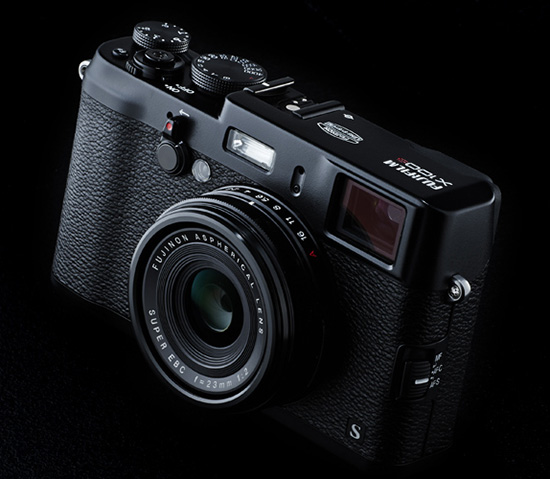

- #Adobe camera raw fuji x100 how to#
- #Adobe camera raw fuji x100 pro#
- #Adobe camera raw fuji x100 series#
- #Adobe camera raw fuji x100 free#
It was great not to add destructive (non-reversible) settings such as sharpness, tones, DM or grain effect to my images, only to regret it later. I was no longer a slave to my setting decisions pre-shoot, wasting a lot of my thought process to decisions that I couldn’t change after I took the image. The ability to customize, experiment, and deciding to either keep or redo my film simulation JPEGs in-camera was empowering. Since the X-Pro 2 creates 24mp images, it was easier on my memory card as well. Moreover, I found shooting in RAW and then deciding later which film simulation to apply was a more efficient use of my time and energy. Here is another RAW conversion from the same RAW file to another JPEG (straight out of camera), using the same settings except using the Classic Chrome film simulation: Again, hopefully Fujifilm can add this capability in the future. I wish there was a way to zoom in on the image to peek without having to create the JPEG, but there isn’t. Once you create the image, the camera gives you the option to create a JPEG from it or start over again. Perhaps Fujifilm could add this information in the future. I tried looking for the above information in the meta data on my computer after importing the images, but none of the Adobe applications (PS, LR) could find the information in the EXIF. Let me decipher the RAW conversion process:Īs illustrated above, the camera retains all the information for the RAW to JPEG conversion. Here is the screen shot of the back LCD info for both the original RAW file and then the finished JPEG: I used the Fujifilm X-Pro2 with the XF 35mm f/2. The opening image of this article was originally shot as a RAW file and then I used the in-camera conversion feature to create the JPEG (straight out of camera image). *It would have been nice to be able to apply image size, aspect ratio and image crop as well, but these adjustments can easily be applied later on a computer. Here is the list of all in-camera RAW conversion adjustment features: I can also adjust dynamic range, highlight and shadow tones, sharpness, noise reduction and even apply push-pull process after I take the image.
#Adobe camera raw fuji x100 free#
This was an inefficient use of time and memory space.īy utilizing the in-camera RAW Conversion feature by shooting RAW initially and then selectively choosing my most effective film simulations afterwards, I was able to free myself from the burden of choosing my film choice ahead of time (imagine being able to do this while shooting real film?) Another major advantage of in-camera RAW processing is the ability to adjust white balance after taking the image, which includes my own custom WB settings (3 settings), color temperature adjustment and WB shift. I ended up deleting 3 at a time during editing, or storing 3 images every time. Another issue was creating 3 high resolution images every time I took a single shoot. I would have to think about what I was shooting and then constantly change which 3 simulations I would use.
#Adobe camera raw fuji x100 pro#
However, I often struggled to choose only 3 of my 4 favourite film profiles (Provia, Astia, Classic Chrome and Pro Neg. To be even more ‘efficient’ I started to use film simulation bracketing for every image, imagining I was simultaneously shooting 3 rolls of film at one time. I always reserved one custom function button to adjust film simulations, thinking it the fastest way to change my ‘film’ while shooting mid-roll. There is one major reason why those who love Fuji’s film simulations should shoot RAW: You can apply film simulation profiles after you take the picture! Until I was forced to do it, I did not think about the advantage of shooting this way. How would I prepare my review without being able to at least take a quick peek at the RAW files? I contacted Fujifilm Canada and they made a humble suggestion: ‘Why don’t you just use the in-camera RAW conversion?’ I thought about it for a second, and then another second. While reviewing the pre-production X-Pro 2 there was no RAW support at the time. In general when shooting Fujifilm cameras, I stuck with JPEGs. Why would I bother shooting RAW? Perhaps if I was shooting in tricky lighting or was on a commercial shoot, I would shoot both RAW and JPEG as extra insurance.

If I want a variety of looks, I would use the Film Simulation Bracketing feature. On the other hand I love the colours coming from Fujifilm’s JPEGs, especially the unique film simulations.
#Adobe camera raw fuji x100 how to#
I’ve always known the feature is there waiting in the menus ready to be used, but I could not see how to integrate it into my workflow.
#Adobe camera raw fuji x100 series#
I never paid much attention to the in-camera RAW conversion capabilities of the Fujifilm X series cameras.


 0 kommentar(er)
0 kommentar(er)
